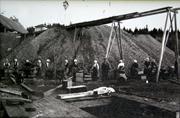
Figure 1. Women sorting the ore. Early 1900s.
Source: Wikimedia Commons.

Figure 2. Washing of the ore. Hans Hesse: Annaberger Bergaltar, 1522, Annaberg-Buchholz. Source: Wikimedia Commons.
Written sources
Some clues to the work of women in Salberget are to be found in written sources. The earliest, Tax Records from the 16th century, mention women working as prostitutes in the mining village. Regarding work connected to the mining activity itself, written sources from the 17th century tell of women sorting the ore, a seasonal work undertaken above ground. The sorting of the ore seems to be a work preferentially pursued by women and children, a division of work that continued into the 19th century (Figure 1). In addition, women were also involved in the washing of ore at the foundry, some distance away from the mining area (Figure 2).
Looking into the Church Records of Sala city parish from the middle of the 18th century, the notation of occupation is only connected strongly connected to younger women, still not married women, working as maids. The married women are mentioned as “wifes”, for instance: “wife to the miner Lars Olofson, or to the farmer Sven Olson, or to the Bergmästaren (i.e. overseer of mine). No doubt the wives had different tasks during the year depending on their social status. In fact, both the “maids” and the “wifes” worked in the mine, but their work title was not spelt out in the records, partly because their work shifted all year round between different tasks.
Most of the early mining in Sala was done by surface mining with open pits, but later in the 17th century sub-surface mining started at the initiative of the Crown. In the Bergslagen area in general, the major work of digging shafts demanded a large labour force. This type of seasonal job also involved women. Furthermore, women contracted work with horse-drawn carriages, transporting wood, coal and ore to the mine and to the foundry at beginning of the 18th century. In at least the latter part of the 18th century, written sources tell of women working with so-called handbokning, i.e. crushing the ore.
There are written sources concerning especially iron mines in the Bergslagen area that do contain information about women working underground, or rather in the open pits of surface mining. For instance, Bergmästare Bergenskiöld mentions that bergsmännens (i.e. the mine owners’) wifes, children and maids were working in the mines of Nora Bergslag at the end of the 18th century. According to Henriksson often as much as half the work force consisted of women working below ground in Nora during the early 19th century. Their salaries were the same as the men’s (compare with Jars statement below).
Travellers’ from abroad give eye witness to women working in the mines. For instance, French traveller G Jars at his visit to Nordmarks mines in the county of Värmland 1769 noted women working both above and ‘below ground’. He also noted that their pay was less than the men’s’. Another traveller, David Edward Clarke, who also visited Persbergs mines in the same area at the end of the 18th century, was appalled by the bad conditions in the mine and the terrible women. He wrote the following:
Scarcely had we recovered from the stupefication occasioned by our first introduction into this Pandaemonium when we beheld, close to us, hags more horrible than perhaps it is possible female figure to exhibit, holding their dim quivering tapers to our faces and bellowing in our ears. One of the same sisterhood, snatching a lighted splinter of deal, darted to the spot where we stood, with eyes inflamed and distilling rheum, her hair clotted with mud, dugs naked and pendulous; and such a face, and such hideous yells, as it is impossible to describe.
However, in the latter part of 19th century women did not seem to work any longer in the mines in Nora. Men worked under ground and women above. According to Eva Blomberg this was the foundation of a masculine ideology among miners that developed during the early 1900s.
The muscles
This study encompasses twenty-four muscle attachments (on the clavicle, the humerus, the radius and the ulna) from the right side of the upper body. The lesions seen (pitting (OL) and bone formation (OF) respectively) of the attachments have been coded 0-4, a gradient scale ranging from no changes (0) to severe changes (4).
To be able to study the work of women, we will need a baseline separating women working in mines from women working above ground (if possible). Since there is no suitable reference material for women, I have decided to try to get a baseline for men instead, using the men buried without coffin as an example of non-miners and the men buried in coffins as miners, although their work was divided between the mine and the farm.